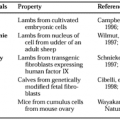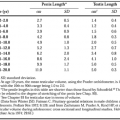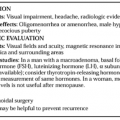MEASUREMENT
Part of “CHAPTER 51 – PARATHYROID HORMONE“
RADIOIMMUNOASSAYS
Radiommunoassays (RIAs) developed for human PTH generally do not use human PTH (hPTH) 1–84 as a tracer because of its scarcity and because it lacks a tyrosine residue for convenient radioiodination. Instead, bovine PTH (bPTH) 1–84 is used, possibly contributing to the reduced sensitivity for hPTH. The antisera used in PTH RIAs are generally polyclonal and have been raised against bPTH 1–84 or hPTH 1–84. Nevertheless, populations of antibodies within polyclonal antisera directed against specific epitopes contained in the 1–84 molecule may predominate. Antibody populations recognizing the COOH-terminal region of PTH 1–84 usually are readily obtained after immunization with bPTH 1–84; antibodies recognizing the midregion also occur with high frequency.161 Sufficiently sensitive antisera containing antibodies predominantly interacting with the NH2-terminal region are more unusual but have been successfully raised.162
Attempts to direct antibody specificity have used several strategies. Although the development of monoclonal antibodies to PTH or PTH fragments would seem to be the most direct route to achieve specificity, this approach has not been successful for various technical and biochemical reasons. Instead, specificity has been achieved by using polyclonal antisera with predominant specificity for selected regions, as determined by their reactivity toward synthetic fragments of discrete regions of the molecule or by enhancing the specificity of such antisera by using synthetic fragments of the midregion or COOH-terminal end of PTH as tracers.
An important advance in the measurement of PTH is the development of immunoradiometric assays (IRMAs) that use antisera directed against the NH2-terminal and midregion or COOH region of the molecule. These assays (i.e., “intact” assays) detect mainly intact PTH 1–84 and appear to be the most sensitive and specific.163
Defining the specificity of an RIA is important because of the complex metabolism of PTH, which results in a multiplicity of circulating molecular forms. The most abundant circulating forms are midregion and COOH fragments because of their longer half-life in the circulation; these become even more predominant in renal failure when clearance is further impaired.89,90 The presumed bioactive forms, intact PTH 1–84 and the NH2-terminal fragment, are cleared more readily and circulate at lower levels. Midregion and COOH-directed RIAs detect long-lived fragments and intact bioactive hormone. These RIAs generally do not require the high sensitivity of NH2-directed assays to be useful, because they measure higher absolute levels of PTH.
Stay updated, free articles. Join our Telegram channel

Full access? Get Clinical Tree






